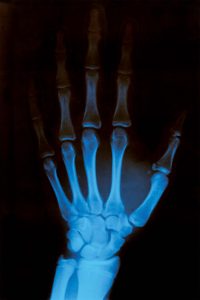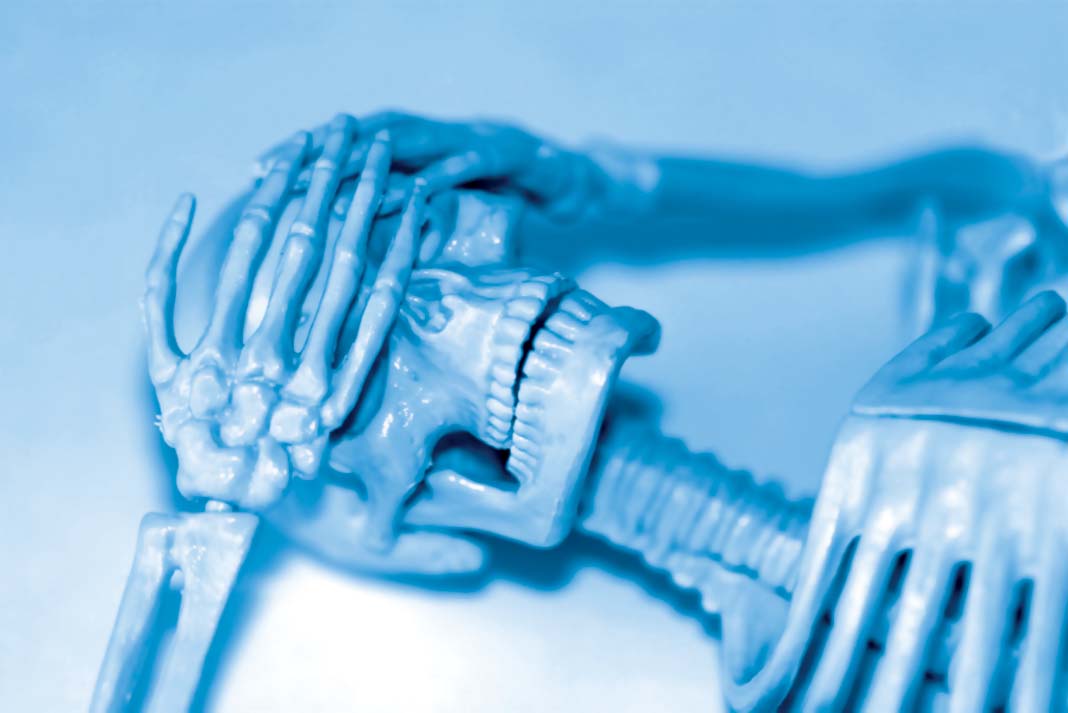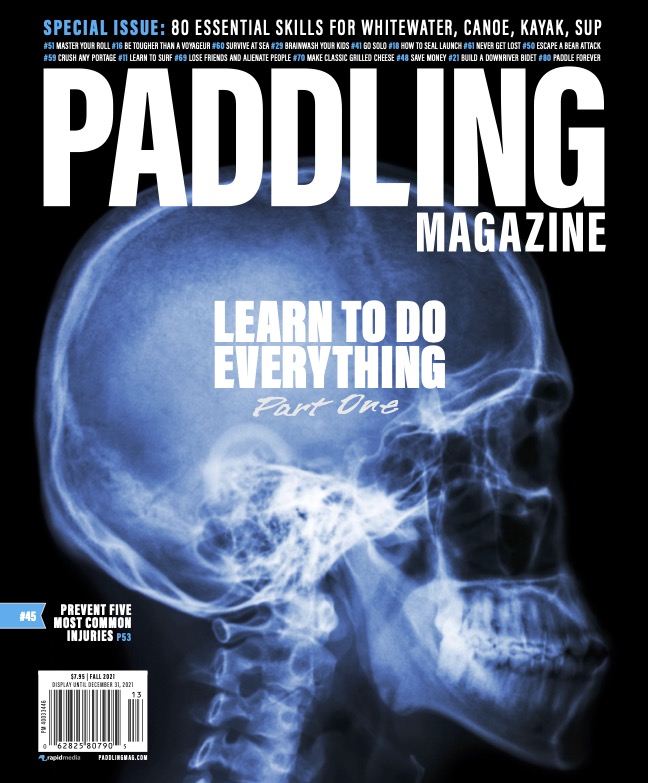Products You May Like
Ours is not a gentle sport. No matter how practiced and prepared you may be, a risk of injury exists around every rocky bend in the river. A little knowledge can be a dangerous thing—but that’s just what we’re going to give you. Here are some of the most common paddling injuries and how to recognize, prevent and when prevention fails, treat them.

1 Dislocated shoulder (anterior)
Cause: When your elbow is raised above your shoulder, even a small amount of backward pressure can stretch ligaments and lever the ball of your humerus out of its socket in the scapula.
Symptoms: The dislocated shoulder droops and the humerus ball protrudes from the pectoral area, accompanied by discomfort or intense pain.
Prevention: Keep your elbows low and tucked in when bracing and keep your lower arm bent at the elbow when doing a Duffek or draw stroke. If you do suffer a dislocation, work on your bracing technique because your shoulder will now be more vulnerable.
Treatment: Leave relocations to experts. At the scene of the injury, sling and swathe the arm in the position you find it, monitor blood circulation to the fingers and get ready for a hell of a portage out. If you are on a three-week solo expedition and you need to relocate your shoulder on your own, try sitting down with your knees in front of your chest, hug your knees with both arms and slowly lean backward.
2 Broken nose
Cause: Penciling in off a large drop with your paddle shaft in front of your face.
Signs/Symptoms: You’ll look and feel like an old-timer staggering out of the Legion Hall with a swollen, deformed schnoz and a dull ringing in your ears.
Prevention: Hold your paddle to one side, parallel to the boat, while hucking—not in front of your face.
Treatment: Control any bleeding by blowing out clots and pinching the bridge of your nose for 15 minutes. Plan on visiting a hospital when you get off the river. there’s no point in resetting it yourself unless you weren’t very fond of it in the first place and are willing to take some chances.
3 External otitis (swimmer’s ear)
Cause: An infection brought on when your ear becomes host to the bacteria and fungus most often present in warm water.
Symptoms: Your ear is tender on the outside and red, swollen and itchy on the inside. The combination will leave you dizzy with pain.
Prevention: Use a drying, antibacterial solution of equal parts rubbing alcohol and white vinegar after paddling in warm or polluted waters. Wear ear plugs.
Treatment: Wet willies with antibiotic cream.
4 Exostosis (surfer’s ear)
Cause: Your inner ear defends itself against cold water by building up layers of calcium in the ear canal.
Signs/Symptoms: As the calcium blocks off your ear canal it impairs hearing and drainage.

Prevention: Keep cold water out of your ear by wearing earplugs or practicing your braces.
Treatment: Surgery.
5 Tendonitis
Cause: Repetitive contraction of the forearm muscles, leading to inflammation of the tendons. A white-knuckle death grip on an old school, straight shaft paddle with extreme feather is a great way to afflict yourself. Tendonitis often occurs early in the season when your forearm muscles are weak and unaccustomed to paddling.
Symptoms: Swelling, numbness, pain, loss of motor control.
Prevention: Loosen your grip on the paddle, choose a stick with less feather and work on strengthening your forearm muscles off the water.
Treatment: Rest, but since not paddling is obviously out of the question, your best bets are anti-inflammatories and stretching. Chronic cases may require surgery.

6 Sprained ankle
Cause: Your ankle rolls to the outside over top of your foot after missing a step on a portage, stretching or tearing the ligaments on the outside of the ankle. This usually happens near the end of the day when you are tired or rushed, or when you are portaging but still staring at the set through the trees, wondering if you should have run it after all.
Symptoms: An ankle that’s bruised or swollen on the outside and even more painful to walk on than look at.
Treatment: In order to get to a place where RICE—rest, ice, compression and elevation—is possible, you’ll have to stabilize the ankle. Wrap the affected area from the instep to mid-calf with tape or a tensor, starting from the arch side and running under then over the foot.
Prevention: Replace your neoprene socks with something more supportive, take your time while portaging or just stay in the boat and give’er.

7 Bruised ego
Causes: Either opting out of a run, or else convincing yourself to run something and then realizing you should have opted out.
Symptoms: Susceptibility to self-doubt, low self-esteem and depression. Chronic victims are usually accomplished swimmers.
Prevention: Always carry a camera. This way you can excuse yourself from suspect runs for the sake of “getting some shots.”
Treatment: Beer.

This article first appeared in the Spring 2006 issue of Rapid Magazine and in Paddling Magazine Issue 65. Subscribe to Paddling Magazine’s print and digital editions here, or download the Paddling Magazine app and browse the digital archives here.
